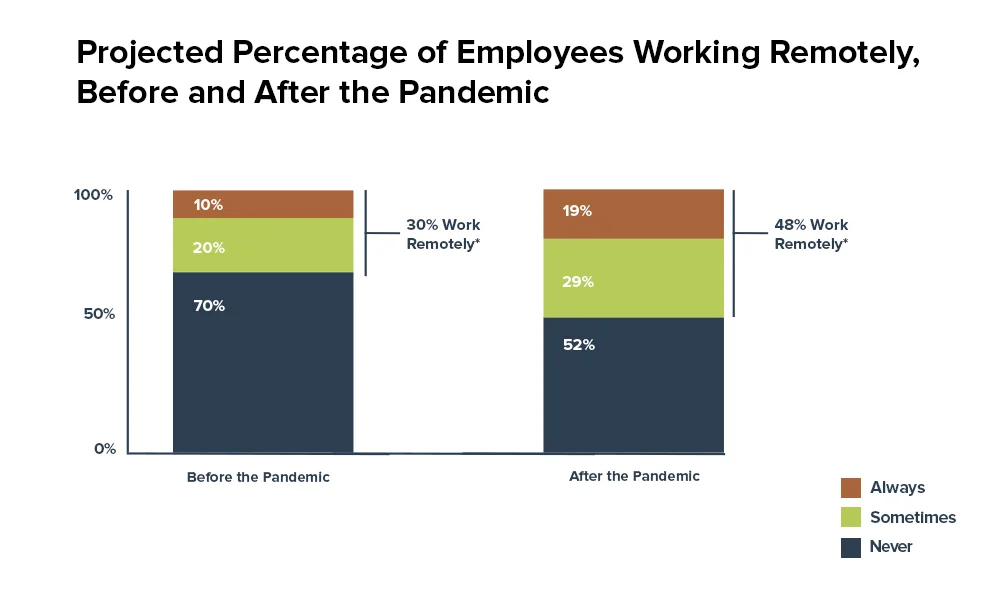One of the core lessons that the pandemic has shown is that by leveraging modern technology, businesses can function, even under lockdown. Technology offers resilience, and businesses not only managed to sustain but also managed to grow.
We can’t deny the fact that not every business was able to sustain under the Covid-19 pandemic. We even witnessed staff being laid off, production lines being halted, and businesses being shut down forever. However, the ones that survived knew that it was time to transition. The workforce was allowed to work from home to keep the business up and running.

While in IT, work from home wasn’t a new concept, it was for the first time the entire staff was working from home. For many, adapting to the work from office status quo was easy. People noticed stress reduction as they were able to (for instance) save long hours spent during commuting to work, and use this time for recreational purposes or spend with family.

Remote Team decreases costs
6 out of 10 employers identify cost savings as a significant benefit of remote work (Global Workplace Analytics). This is mainly in real estate costs (rent and utilities) and includes payroll costs as workers value flexibility over salary.
- IBM has saved $50 million per year in real estate costs, McKesson saved $2 million, and Sun Microsystems saved $68 million a year due to remote workers not needing office space. (Global Workplace Analytics)
- Other savings categories include cleaning services, parking spaces, food, and property tax.
- 47% of surveyed workers are willing to take a pay cut to work more hours from home (Platform.sh).
Remote hiring technology is booming
Consider how difficult it would have been to work from home or hire effectively during the pandemic if it had happened in the 1990s or early 2000s.
Luckily, companies in 2020 were able to leverage a rapidly maturing marketplace of tech solutions, including video conferencing for online interviews, collaboration software, employee onboarding, and other HR tools that enable remote hiring and improve the remote candidate experience. As expected, these markets are experiencing sharp growth that is expected to continue throughout the 2020s.
- The global video conferencing market size is predicted to grow from US$5.32 billion (2019) to US$10.92 billion (2027). Zoom’s annual revenue rocketed from US$623 million (January 2020) to US$2.65 billion (January 2021) (Fortune Business Insights)
- The global team collaboration software market will grow from US$13.44 billion (2019) to US$35.71 billion (2027) (Fortune Business Insights)
- Applicant Tracking Systems (ATS) will grow from US$1.08 billion (2017) to US$1.81 billion (2023) (Markets and Markets)
- The employee onboarding software market will grow from US$772.6 million (208) to US$2.19 billion (2027) (Absolute Market Insights).
Remote teams have also made it easier for companies to attract and hire top talent from anywhere on the globe. Why take the pain of spending hours in hiring, when you can hire the right technical talents with Akeo. Beyond offering a team which has extensive experience in what they do, we also mentor them from time-to-time and keep a close eye on the work progress and management.


.jpg)


